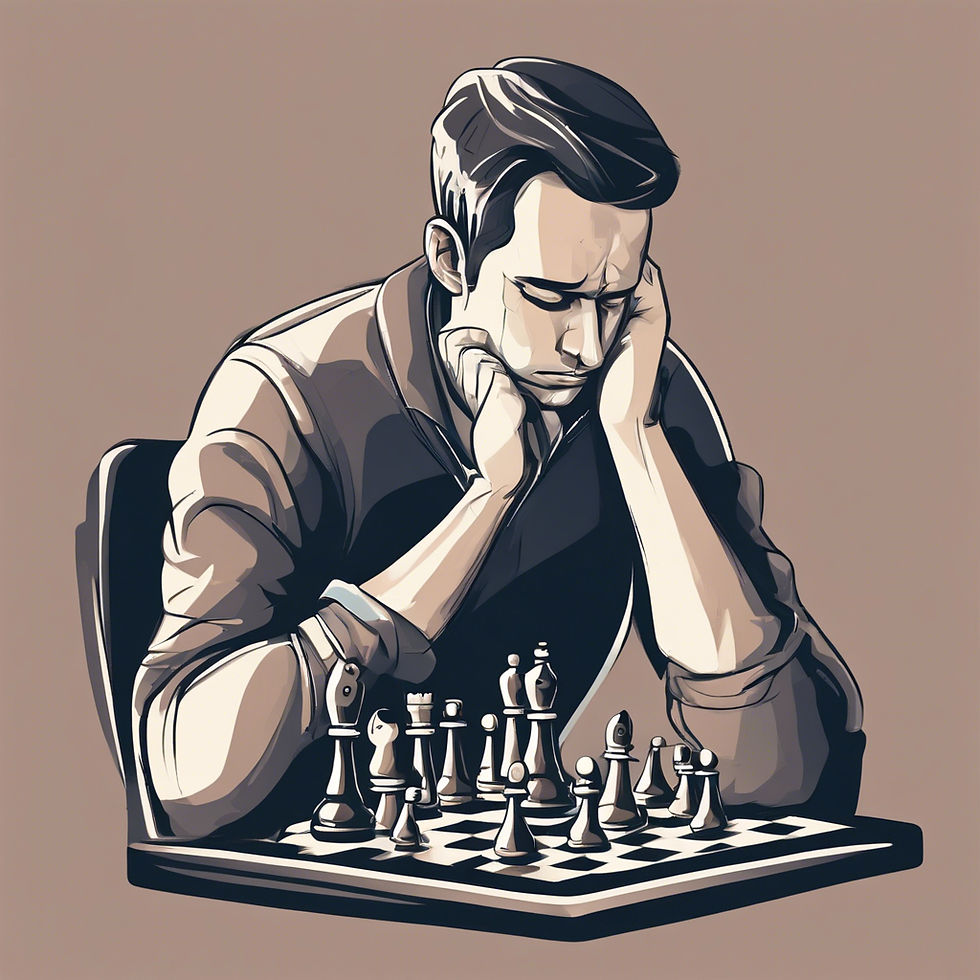The 5 Laws of Great Thinkers Part 2: Backward Induction
- Sebastien Braxton
- Jun 10, 2024
- 3 min read
The 21 Game
The 21 game. Not black jack or "21," in a card game sense, but the 21 game. I have only heard of it but never played it with anyone. The game breathes simplicity but after playing (so I am told) gets really complicated. So the essence of the game is this:
2 players, starting at 0, take turns adding 1, 2, or 3 to the total
The game ends when the sum of the added numbers equals or exceeds 21
The player forced to make the final move loses.

According to 21 game enthusiasts, while game sounds tricky, it's possible to win in a single solitary move! According Dr. Eva Krockow, assistant professor at the University of Leicester, the secret goes like this:
Player 1, starting at 0, adds 3 to the total.
Now you (Player 2) need to decided whether to add 1, 2, or 3. If you choose strategically, you can set yourself up for inevitable victory. But how?
Backward Induction
"The solution lies in the decision-making approach called backward induction, which starts by considering the end of a problem and then works backward in time to arrive an optimal approach for the beginning," Krockow says. Instead of focusing upon the immediate situation, consider the game's end first. The way to ensure you are not the one adding to 21, is to ensure that you are the player who reaches 20, because then the first player must add to 21 and subsequently lose. (Ahhh yes, sweet victory!!).
So how can you ensure that you reach 20? By ensuring that you reach 16 in your second-t0-last move, because no matter whether player 1 adds 1, 2, 0r 3, it can't be greater than 19, allowing you to add 1, leading to 20. (And then..."Ahh yes: sweet victory!"). How can you be sure to be the one to call 16? By ensuring you're the one to add to 12. Do you see the pattern? After long, the pattern emerges that to win, you must be the first to reach a multiple of 4 with each move guaranteeing that you will be able to call 20. (And then...alright I won't say it...just for the competitive among us :D)
Thus, "focusing on the future, you can work backward to find the best strategy for the present." - Dr. Eva Krockow, Ph.D.
By reasoning from the end of a problem to the optimal starting point, we think better in the present. Stephen Covey, in his famous book, The 7 Habits of Highly Effective People, describes the idea with the second habit in his list: Start with the End in Mind. Dr. Krockow highlights that backward induction "relies on analytical thinking and...the ability to imagine your situation at a later point in time." Competitive chess players, among the greatest thinkers in the world, represent some of the most skilled and frequent users of backward induction while the average Jane or Joe either do not realize that this strategy exists, aren't motivated enough, or unable to perform more than one or two steps of backward

reasoning. Where are all the backward induction 101 classes at right?
In Real Life
This law of great thinkers can be "applied to many decision-making scenarios in which the outcome relies on a series of interdependent choices," says Dr. Krockow. One of the clearest applications is in our relationship goals. One of my sisters had turned 31 and felt the clock was ticking on her goal of being a mother. Her relationship of several years had not progressed an iota. Her thought process went like this:
She would need to have her first child, as she wanted at least 2, by 35 years old, meaning she must be pregnant by 34 years old.
Marriage was a prerequisite as we grew up in a single mother home, and she wanted no part of that. In addition she would want to spend a year enjoying her spouse before kids. So, she would need to be married by 33.
Assuming she left Robert today, it would take, in her estimation about 1.5 years to get to know a quality guy before being engaged and then approximately 1 year planning the wedding.
Thus, realizing she's already behind by 6 months, she would either need to marry Robert within the next few months. But he wasn't interested or ready for that type of commitment.

So she broke up with Robert. My sister's journey illustrates how focusing upon the immediate circumstances can lead down a winding way to the city of disappointment and regret but focusing upon a future goal as a "true north" compass for our decisions leads us to the nearest cafe of rational strategies for the present. Without such thinking, she would never have broken up with Robert and never met her current husband who was ready for such a commitment.
Komentar